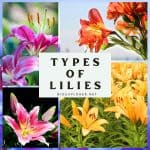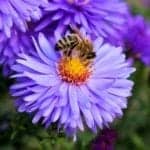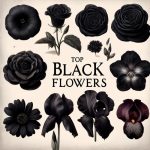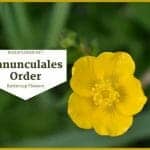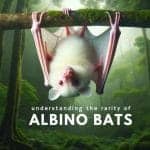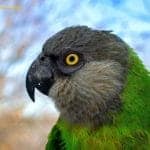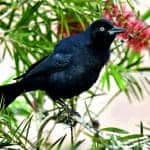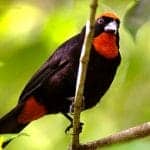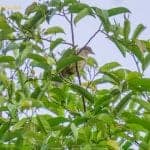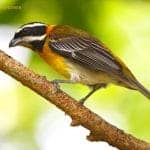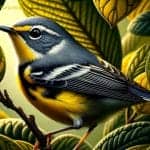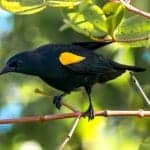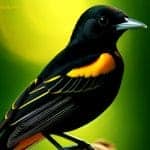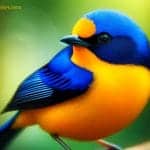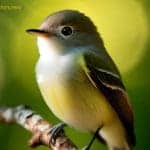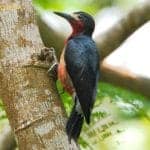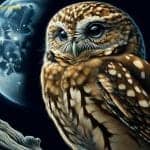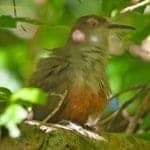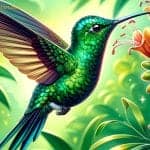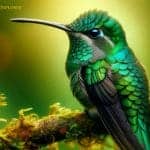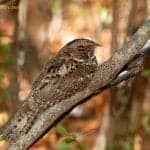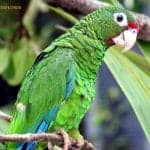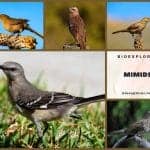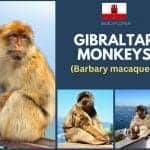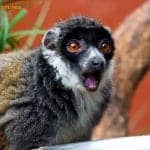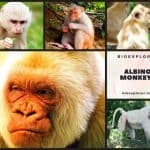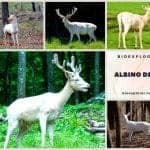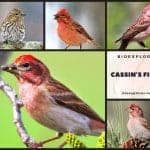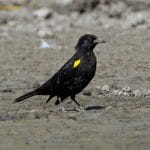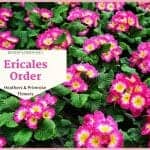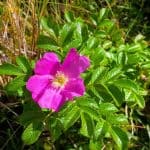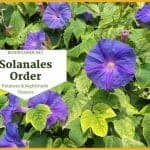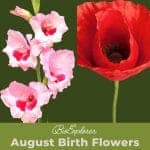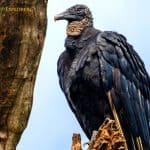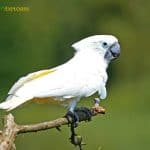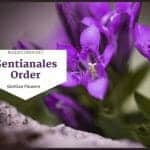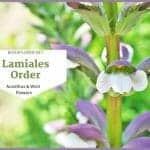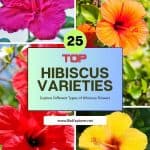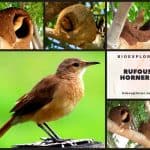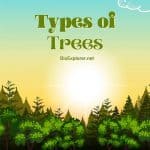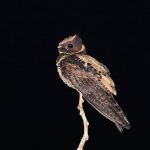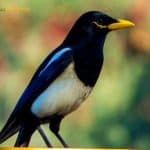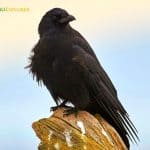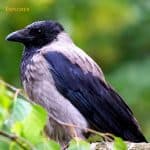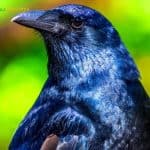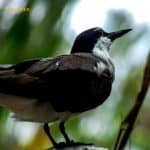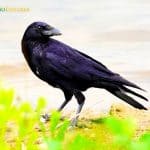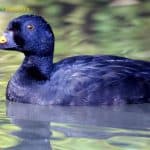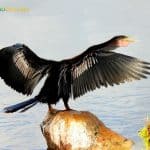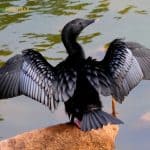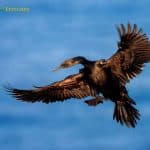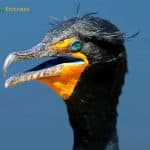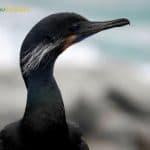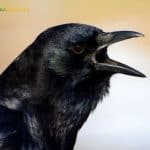Species of birds - search results
If you're not happy with the results, please do another search
Types of Lilies
Discover the stunning beauty of different types of lilies. From oriental hybrids to unique lily species, learn about the diverse world of lily varieties.
Top 21 Holly Flowers For Sprucing Up Your Garden!
Discover the enchanting world of Holly flowers with our comprehensive guide. Explore their vibrant beauty today from 21 notable Holly varieties from history to cultivation.
Exploring the Top 50+ Most Exquisite Purple Flowers in the World
Are you looking for cute purple flowers to plant in your garden, or want to learn about them from a botany perspective? Here are the 50+ top pretty purple flowers and their names.
Blooming Texas: 25 Gorgeous Native Flowers Revealed!
Texas is a large state with its own floristic region, having more than 5,000 species of native flowering plants. Because of its diverse landforms, Texas offers many famous blooms for visitors and residents. Explore the top 25 Texas flowers and their characteristics.
Order Proteales / Sugar-bushes & Water Lotus Flowers
Proteales is a part of peripheral eudicots classified together only recently. The Proteales flowers are small or large and unisexual or bisexual. The American lotus, the Indian lotus, the London plane tree, Wagon tree and large-nut sugar bush are examples of Proteales.
The Allure of Black Flowers: Unveiling the Top 21 Darkest Blooms
This article explores the top 21 black flowers, delving into their unique characteristics, growing requirements, and fascinating facts. Each of these varieties, from the classic Black Dahlia to the exotic Black Bat Flower, has a story to tell.
Order Ranunculales / Buttercup, Barberry & Poppy Flowers
Ranunculales is the order of angiosperms with a worldwide distribution, which are peripheral eudicots with spiral leaves, three openings (colpi) in the pollen, and spectacular floral diversity. The buttercup, Barberry, Moonseed, Chocolate vine and poppy flowers are the famous example species of Ranunculales.
April Birth Flowers
Discover the hidden symbolism behind April's birth flowers - daisies and sweet peas. Explore their significance (symbolism & meaning) in this captivating read.
Albino Bats
Albino Bats - Discover the genetic causes, physical traits, geographic hot-spots, and conservation efforts surrounding these rare pigment-less morphs that persist in tropical caves and forests through 60 global cases across 11 families.
Senegal Parrot
Learn all about the vibrant, social Senegal parrot (Poicephalus senegalus), a popular West African parrot species that thrives in captivity when well-trained. Get information on taxonomy, physical features, reproduction, behavior, communication style, and fun facts.
Greater Antillean Grackle
The Greater Antillean Grackle is a glossy black songbird native to the Caribbean’s Greater Antilles, including Cuba, Jamaica, Hispaniola, and Puerto Rico. Males reach about 27 cm (11 in) with a distinctive keel-shaped, "rudder-like" tail, while females are slightly smaller and less glossy. Its most striking feature is its bright yellow eye, the only non-black part of its body. These bold, noisy black birds thrive in open habitats near humans-towns, farms, mangroves, and pastures-and often form large, social flocks. Opportunistic eaters, they consume insects, fruit, seeds, small animals, and even human scraps.
Puerto Rican Bullfinch
The Puerto Rican Bullfinch, or comeñame, is a stocky, black songbird with bright orange patches above the eyes, around the throat, and under the tail. Endemic to Puerto Rico, it inhabits dense forests and coffee plantations, foraging for fruit, seeds, insects, and spiders. Measuring 17–19 cm, it’s often heard before seen, thanks to its loud whistles and trills. Nests are spherical with a side entrance, usually placed low in trees or shrubs; clutches contain two to three greenish eggs.
Puerto Rican Tanager
Trail a voiceful rainforest insectivore, the Puerto Rican Tanager (Nesospingus speculiferus), through remote protected sanctuaries sustaining this species' specialized cloud forest niche now endangered by climate change and urban encroachment. Understand why this blue-hooded songster's reliance on undisturbed canopy cover makes conservation of prime breeding grounds an emergency for securing its future.
Puerto Rican Spindalis
Check the brilliant hues of Puerto Rico's unofficial national bird, the Puerto Rican Spindalis (Spindalis portoricensis), flickering like an island flag across forests and farms where this frugivore finds refuge. Understand how although adaptable to human-altered areas, habitat integrity is still paramount to enduring conservation for this vivid and voiceful endemic songster.
Adelaide’s Warbler
Preview a dry forest specialist, Adelaide's Warbler (Setophaga Adelaide), whose preference for subtropical habitats, unlike mainland wood-warbler relatives, heightens both its inherent vulnerability and importance as a Puerto Rican endemic. Explore integrated conservation solutions that sustain warbler populations while supporting continued agricultural heritage across this region.
Yellow-shouldered Blackbird
The Yellow-shouldered Blackbird is a glossy black songbird with a distinctive yellow patch on its "shoulders" outlined by a narrow white margin. Endemic and endangered in Puerto Rico, it inhabits mangroves, arid scrublands, and coastal forests. Males and females look alike, though males are slightly larger. These birds are primarily insectivorous but also eat some plant material, like cactus fruits. Nests are built in tree cavities, palm fronds, or cliff crevices, often in small colonies. Habitat loss and nest parasitism threaten the species. Their bright yellow epaulets set them apart from the similar red-winged blackbird.
Puerto Rican Oriole
The Puerto Rican Oriole is a striking black songbird with bold yellow patches on its lower belly and shoulders. Endemic to Puerto Rico, it inhabits forests, mangroves, plantations, and especially areas with palm trees, where it weaves hanging basket nests beneath palm leaves. Both sexes look alike and sing, producing complex songs made of up to 27 different notes. Omnivorous, it forages for insects, fruit, lizards, nuts, and grains in dense vegetation. Family groups often remain together after breeding. Threats include habitat loss and nest parasitism by shiny cowbirds, but the species is still classified as Least Concern.
Puerto Rican Euphonia
Preview a gleaming rainforest gem, the Puerto Rican Euphonia finch, recently proven genetically distinct from its Hispaniolan counterpart. Understand how substantiating this brilliant blue and yellow species as an endemic taxon underscores Puerto Rico's precious biodiversity. Explore outstanding questions about diet, breeding ecology, habitat range and conservation status needing research to inform appropriate protections.
Puerto Rican Vireo
Follow the Puerto Rican Vireo's (Vireo latimeri) melodious voice echoing across lush rainforest canopies, where this prime songster and insect-hunter is now increasingly challenged by hostile cowbird invaders. Learn specific conservation actions to secure this species' specialized nesting requirements and protect fruit sources supplementing its distinctive territorial songs.
Puerto Rican Woodpecker
The Puerto Rican Woodpecker is the only woodpecker endemic to Puerto Rico, easily recognized by its glossy black body, bright red throat and breast, and a white band across the forehead. Males are slightly larger and have more vivid red coloring than females. This species thrives in forests, mangroves, coffee plantations, parks, and gardens across the main island, feeding mainly on insects but also enjoying fruit and occasionally small vertebrates. Its loud "wek-wek-wek" call is a common sound in Puerto Rican woodlands. Old nest cavities are often reused by other native birds.
Puerto Rican Owl
Discover a versatile nocturnal raptor, the Puerto Rican Owl (Gymnasio nudipes), stealthily ruling the island's forests and urban areas under cover of night. Follow its prowess capturing large insects and small vertebrates to sustain viable populations. Understand how this savvy Screech owl's adaptability across wooded to developed areas enables its continued success.
Puerto Rican Lizard Cuckoo
Uncover the mysteries of an expertly camouflaged rainforest bird, the Puerto Rican Lizard Cuckoo, capable of vanishing before your eyes after beckoning you with its eerie yet alluring calls. Understand how mature broadleaf cover supports this specialist predator, efficiently capturing frogs, lizards, and insects high in the canopy to sustain its cryptic existence.
Puerto Rican Emerald
Follow a tiny metallic-hued hovercraft nimbly navigating the maze of mangroves, forests, and gardens spanning Puerto Rico. Well-adapted to myriad nesting sites, this Emerald hummingbird flits freely, relying on a diverse nectar supply to counter any migration need. Learn how keeping multiple doors open through habitat connectivity sustains this abundantly welcome wildcard across the island.
Green Mango
Marvel at Puerto Rico's smallest avian pollinator, the iridescent emerald Green Mango hummingbird, fueled by nectar, sustaining its mobility through lush mountain rainforests and coffee plantations. Trace its role in carrying pollen through unbroken floral corridors rich in fruiting trees. Understand this diminutive species' undisrupted pathway reliance on habitat connectivity to counter migration needs.
Puerto Rican Nightjar
Rediscover a ghostly lost species - the Puerto Rican Nightjar - emerging phantom-like from rapidly vanishing subtropical dry forests still echoed by its mysterious calls. Learn about the nocturnal insectivore's distinctions, specialized habitat needs, threats from encroaching human activity, and why protecting this specialized niche remains essential to ensure the shy bird's continued existence.
Puerto Rican Amazon
Follow the extraordinary story of the Puerto Rican Amazon. Once abundant across mountain forests, this vivid parrot now relies on dedicated conservation to defy extinction odds. Learn about its distinctive red-crowned green plumage, role dispersing seeds, the intensive recovery effort when just 13 birds remained in 1975, and why protecting precious habitat remains key to overcoming threats for this critically endangered species.
Mimids
The fabulously playful Mimidae family of Mimids - the mockingbirds, catbirds, thrashers & tremblers of the Americas - is overviewed with facts on evolution, vocal mimicry abilities, behavior, life histories and cultural symbolism of these often supremely talented songsters.
Gibraltar Monkeys
Gibraltar’s iconic Barbary macaques have roamed here 300+ years now, delighting visitors. Explore the history of Gibraltar monkeys on the Rock, their social behavior, role as a conservation priority species with ties to Britain’s fate.
Mongoose Lemur
Learn about the endangered mongoose lemur (Eulemur mongoz), a small Madagascar primate with red beards and bushy tails. Get fascinating facts on their rainforest habits, unique behaviors, seed dispersal ecology, and major threats driving their worrying decline.
Marmoset Monkeys
From the lush Amazon rainforests to the arid caatinga scrubs of northeastern Brazil, miniature marmoset monkeys swing through diverse New World landscapes. Explore all 24 species of marmoset monkeys here.
Albino Monkeys
Albino monkeys, also known as monkeys with albinism, lack pigmentation in their skin, hair, and eyes. Discover more about these unique creatures and their genetic condition.
Albino Deer: A Rare and Fascinating Genetic Mutation
Albino deer are extremely rare and fascinating genetic anomalies. This in-depth guide covers what albino deer are, why they're white, where they're found, major challenges they face, controversies surrounding them, seeing them in zoos, and reasons we find these mystical-looking white deer so captivating.
Cassin’s Finch
Learn about the Cassin's Finch, a unique songbird of western North American mountain forests. This adaptable finch has complex songs, nomadic habits, and thrives across diverse coniferous habitats. Gain insights into this little-known species' ecology and importance.
Yellow-winged Blackbird
The Yellow-winged Blackbird is a striking, stocky bird found in wetlands and reed beds across South America. Males are glossy black with bold yellow shoulder patches that are most visible in flight, while females are brown and streaked with a pale eyebrow. These blackbirds are rarely far from water, often forming small flocks and breeding colonially in reeds. They forage mainly on the ground for seeds, fruits, and insects, sometimes following livestock or farm machinery to catch disturbed prey. Fun fact: males perform acrobatic display flights and flocks will mob predators to drive them away.
Order Ericales / Heathers and Primrose Flowers
Ericales is comprised many economically important flowering plants like Brazil nuts, kiwifruit, and primrose. Ericales is very diverse, involving chiefly trees and terrestrial shrubs that are cosmopolitan in distribution. Some families of Ericales possess the ability for aluminum accumulation. Hardy kiwi, Orange jewelweed, wand plant, lama tree, and Octotillo flowers are some examples of Ericales.
Beach Rose
The beach rose is a deciduous Japanese shrub with a multi-stem. It is native to Japan and is widely used as an ornamental plant. The beautiful beach rose is pollinated by insects and birds. Rosa rugosa is a strong symbol of Love and adoration.
Order Solanales / Potatoes & Nightshade Flowers
Solanales or the potato/nightshade order of the flowers belong to the core asterid clade, manifesting a global distribution. The plants of Solanales possess root stalks or tubers, simple, alternate, and exstipulate leaves, showy flowers, and typically 5-merous floral parts. The Solanales plants are monoecious, andromonoecious, or dioecious. Example species under Solanales order involve the highly cultivated flora of morning glory, potato, eggplant, and tomato.
August Birth Flowers
Delve into the rich history and symbolism of August birth flowers - Gladiolus and Poppy. Find out why they're perfect for birthdays this month!
Black Vulture
The Black Vulture is a large, stocky bird with sooty black plumage, a bare black head, and striking white patches near the wingtips. Found year-round in the eastern and southern U.S. through Central and South America, it thrives in open areas, woodlands, and even around towns. Black Vultures are highly social, often roosting and foraging in large flocks. They feed mainly on carrion, using keen eyesight to locate food, and sometimes follow Turkey Vultures to carcasses. Black Vultures mate for life, care for their young for months, and help clean the environment by consuming dead animals.
White Cockatoo
Discover the breathtaking beauty of the White Cockatoo (Cacatua Alba), their characteristics, diet and several interesting fun facts about them here.
What Do Marine Biologists Do?
Discover how marine biologists unlock the mysteries of aquatic life and protect our oceans' delicate ecosystems. Immerse yourself in this captivating field today!
Order Gentianales / Gentian Flowers
The Gentianales (Gentians) is an order of flowering plants involving herbs, shrubs, undershrubs, lianas, and small trees primarily distributed worldwide. Plants of Gentianales mostly have opposite leaves, interpetiolar stipules, bisexual flowers, mostly fused sepals and petals, 4-5 stamens, and 2 carpels. Important species under Gentianales are coffee, periwinkle, oleander, and gentian.
Order Lamiales / Acanthus & Mint Flowers
Lamiales is an ordering of flowering plants with most members found worldwide. The species of the Lamiales usually have opposite leaves, bilaterally symmetrical and often bilabiate corolla, five petals fused into a tube, four or fewer fertile stamens, and a superior ovary with fused carpels. The mints, olive, bladderworts, and plantain are plants under the Lamiales order.
Hibiscus Varieties
Dive into the vibrant world of hibiscus! Explore 25+ stunning varieties, from rare native species to popular garden favorites. Learn about their unique characteristics, care tips, and fascinating facts. Perfect for gardeners and flower enthusiasts alike. Discover the beauty and diversity of these tropical treasures!
Rufous Hornero
Explore the Rufous Hornero, South America's avian marvel. Dive into its unique habits, cultural significance, and conservation efforts. A birdwatcher's delight!
Types of Trees
Discover the diverse types of trees, from deciduous to evergreen. Enjoy vivid pictures, and learn their roles in ecosystems and their conservation efforts.
Great Eared Nightjar
In the heart of the night, when the world seems to hold its breath, the Great Eared Nightjar takes flight. This nocturnal bird, known scientifically as Lyncornis macrotis, is a captivating creature that has long intrigued ornithologists and nature enthusiasts.
Yellow-billed Magpie
The Yellow-billed Magpie is a striking, large black-and-white bird with shimmering blue-green wings and tail, and a distinctive bright yellow bill and eye ring. Endemic to California’s Central Valley and nearby foothills, it thrives in open oak woodlands, farmlands, and orchards. Highly social, these magpies nest in loose colonies and build dome-shaped nests high in trees. Their varied diet includes insects, acorns, grains, fruit, carrion, and even garbage. Known for their intelligence, they can mimic sounds and sometimes hold "funerals" for dead flockmates. The species is vulnerable due to habitat loss and West Nile virus.
Northwestern Crow
The Northwestern Crow is a mid-sized, all-black bird native to the Pacific coast from southern Alaska to northern Washington. It thrives in coastal habitats, intertidal zones, forest edges, and even urban areas, often foraging on beaches for clams, invertebrates, eggs, and carrion. Known for their intelligence, these crows use tools-dropping clams on rocks to break them open-and perform aerial acrobatics. They are highly social, forming large flocks in winter and engaging in noisy mobbing of predators. Northwestern Crows mate for life, nest in trees or shrubs, and young remain dependent on parents for several weeks.
Hooded Crow
The Hooded Crow is a medium-sized, two-toned corvid with a pale grey body and contrasting black head, wings, tail, and thigh feathers. Found across northern and eastern Europe and parts of the Middle East, it adapts well to woodlands, farmland, coasts, and cities. Hooded Crows are highly intelligent, known for using tools and dropping shells or nuts from heights to crack them open. Their omnivorous diet includes insects, small animals, grains, carrion, and human scraps. Hooded Crows often pair for life, and their harsh "kraa" call is a familiar sound in their range.
Fish Crow
The Fish Crow is a medium-sized, all-black bird with a subtle green-purple sheen, nearly identical in appearance to the American Crow but best distinguished by its nasal "uh-uh" call. Native to the eastern United States, Fish Crows are most often found near water-coasts, rivers, lakes, and marshes-but have expanded inland along river systems. Highly adaptable, they thrive in urban, suburban, and agricultural areas. Omnivorous and opportunistic,
Fish Crows eat everything from carrion and garbage to bird eggs, fruit, and small animals. These black birds often cache surplus food and are known for mobbing predators in groups.
Sooty Tern
The Sooty Tern is a large, striking seabird with black upperparts, white underparts, a white forehead, and a deeply forked tail. Found across tropical oceans worldwide, it spends most of its life at sea, sometimes remaining airborne for 3 to 10 years without landing, as it cannot float due to a lack of waterproofing oil in its feathers. Sooty Terns feed by skimming fish and squid from the ocean’s surface and rarely come to land except to breed in dense colonies on remote islands. Their loud, piercing calls and aerial courtship displays are characteristic of their nesting grounds.
Carrion Crow
The Carrion Crow is a medium-sized, glossy black bird native to Europe and Asia, recognized for its deep, guttural “kraa” call and solitary habits. Adaptable to a wide range of habitats-including woodlands, farmland, moors, coastal cliffs, and urban areas-it often perches in high places to survey its surroundings. Highly intelligent, Carrion Crows use tools, recognize human faces, and even cooperate with each other to hunt or defend territory. Their diet is varied, consisting of carrion, insects, seeds, fruit, and small animals. Offspring from previous years sometimes help parents feed new chicks.
Black Scoter
The Black Scoter is a chunky sea duck, with males easily recognized by their all-black plumage and a distinctive swollen yellow knob at the base of the bill. Females are dark brown with pale cheeks and throat. They breed in remote northern lakes and wetlands, mostly in Alaska and northern Canada, and winter along both Atlantic and Pacific coasts of North America. Black Scoters dive for food, feeding mainly on aquatic insects in freshwater and mollusks like clams and mussels in marine habitats. Black Scoters are monogamous, and their winter flocks can number in the thousands.
Anhinga
The Anhinga, also called the “snake bird” for its long, slender neck, is a large, mostly black water bird with a pointed yellow bill and silvery wing patches. Males have darker, glossy plumage, while females show a paler head and neck. Found in freshwater swamps, lakes, marshes, and slow-moving rivers from the southeastern U.S. to South America, Anhingas are expert divers, swimming underwater with only their head and neck exposed. Unlike most birds, they lack waterproofing oils, so they must spread their wings to dry after diving. Anhingas spear fish with their sharp bills and swallow them headfirst.
Little Cormorant
The Little Cormorant is a compact, all-black waterbird, typically 50–55 cm long, found across the Indian subcontinent and Southeast Asia. In breeding season, adults have glossy black plumage, sometimes with white facial spots and a small crest; in non-breeding season, plumage is browner with a white throat patch. This species thrives in wetlands, lakes, rivers, and estuaries, where it’s often seen diving for fish-its main food. Little Cormorants are highly social, roosting and nesting in colonies, sometimes alongside herons and egrets. After diving, Little Cormorants often perch with wings spread to dry.
Pelagic Cormorant
The Pelagic Cormorant is the smallest and most slender cormorant along the Pacific Coast, recognized by its long, thin neck and all-black plumage, with breeding adults showing white flank patches and short crests on the crown. Found from Alaska to Baja California and the Asian Pacific coast, it inhabits rocky shorelines, bays, and coastal cliffs, rarely venturing far from land. This species dives to depths over 130 feet to catch small fish and invertebrates, often foraging alone. Nests are built on narrow cliff ledges and reused for years.
Double-Crested Cormorant
The Double-Crested Cormorant is a large, black waterbird with a long neck and orange-yellow facial skin. During breeding season, adults display two curly black or white crests on their heads. Found across North America in both freshwater and coastal habitats, they are highly adaptable, nesting in trees, on the ground, or even on artificial structures. These social birds often gather in colonies and are expert divers, feeding mainly on fish but also taking insects, crustaceans, and amphibians. After diving, cormorants are often seen perched with wings outstretched to dry, as their feathers are not fully waterproof.
Brandt’s Cormorant
Brandt’s Cormorant is a large, black seabird found along the Pacific coast from Alaska to Baja California. It is recognized by its thick neck, long body, and, during breeding season, a striking cobalt-blue throat patch and wispy white facial plumes. These dark-feathered birds nest in colonies on rocky islands and coastal cliffs, often building large nests from seaweed and debris. Brandt’s Cormorants are excellent divers, capable of reaching depths over 200 feet to catch fish such as anchovies and herring. These black birds often forage in groups, working together to herd schools of fish for easier hunting.
American Crow
The American Crow is a large, glossy black bird recognized by its distinctive “caw” and confident walk. Common throughout North America, it thrives in a variety of habitats including forests, fields, towns, and cities. These birds are highly social, often living in family groups and gathering in large communal roosts during winter. American Crows are omnivorous and opportunistic, eating insects, seeds, small animals, carrion, and human food scraps. Notably intelligent, they are skilled problem solvers and quick learners. American Crows are curious, cooperative breeders, and adapt well to both urban and rural environments.


